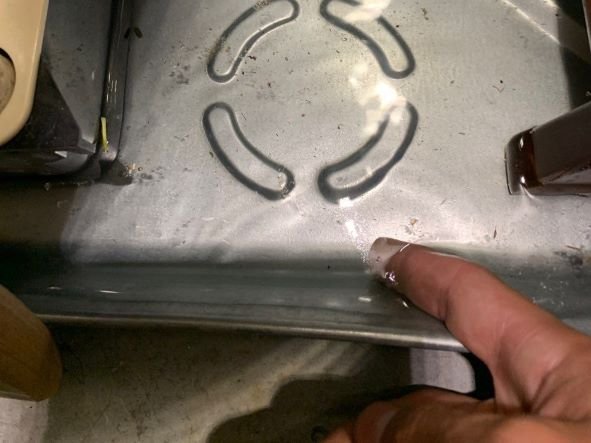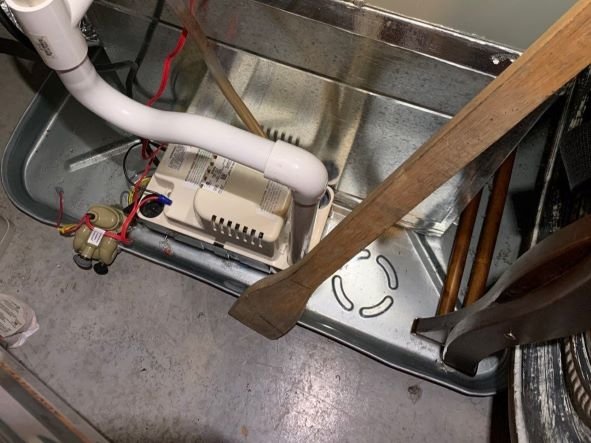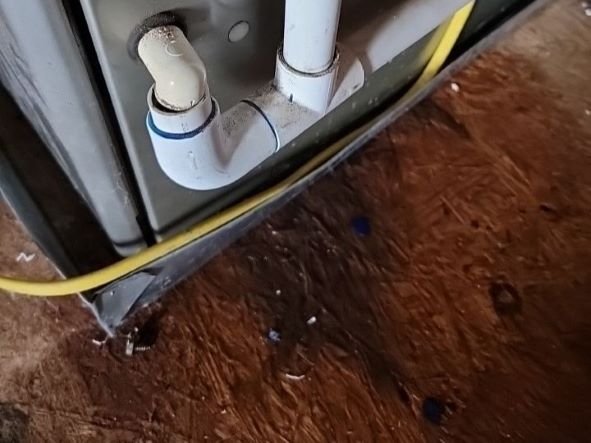Cost of Fixing HVAC Clogged Condensate Drains
2025 Update: How Much Does It Cost to Clear a Clogged Condensate Drain?
A clogged condensate drain may not seem urgent—until it causes:
💧 Water damage around your air handler
🌫️ Musty odors from vents
🛑 System shutdowns
💸 Costly repairs if ignored
If you see water pooling near your indoor unit or smell mildew, your drain line might be blocked—and it’s time to act fast.
Average Cost to Clear a Clogged Drain (2025)
Expect to pay $85–$250, depending on:
Severity of the blockage
System location (attic, garage, basement)
Need for drain line or pan replacement
Local labor rates
TIP: Annual AC maintenance often includes drain line cleaning—a simple way to avoid surprise repair bills.
🔍 Find a Trusted Local HVAC Pro
Need an estimate or second opinion?
Browse our HVAC Contractor Directory to find licensed professionals near you.
Get transparent pricing, verified reviews, and fast service in your area.
Recommended Products for Unclogging or Maintaining AC Drain Lines
Before diving into costs and troubleshooting, here are a few homeowner-friendly tools and supplies that can help you fix or prevent condensate drain clogs. These are ideal for DIYers or anyone wanting to avoid future service calls.
Wet/Dry Vacuum with Hose Adapter
Useful for suctioning out clogs from the exterior drain line. A great first step before calling a technician.
HVAC Condensate Drain Line Cleaning Kit
Includes flexible brushes or tubing to help clear debris inside the drain pipe and trap.
Anti-Algae Condensate Pan Tablets
Drop-in tablets help prevent algae and mold buildup in the drain pan—ideal for seasonal maintenance.
White Distilled Vinegar (Gallon)
Safe and effective for monthly flushing of your condensate line to prevent minor clogs.
Condensate Overflow Shutoff Switch
Automatically shuts off your AC if the drain pan fills up—protecting against water damage.
2025 Tech Tip: Smart Sensors
Some modern systems now include leak detection sensors or smart shutoff valves that alert homeowners when water backup is detected—helping prevent damage from clogged drains.
Quick Links:
Introduction
HVAC systems are the unsung heroes of our homes and offices, silently working to keep our environments comfortable year-round. However, like any sophisticated machinery, they require regular maintenance to function efficiently. One often overlooked component of HVAC maintenance is the condensate drain. A clogged AC drain line can lead to various issues, including water damage and reduced air conditioning system efficiency. This article delves into a common yet significant problem: the cost of fixing a clogged condensate drain line. We'll explore the factors influencing repair costs, provide average cost estimates, and offer insight into both DIY solutions and professional services. Understanding these aspects is key to maintaining the longevity of your air conditioning unit and ensuring a healthy, comfortable indoor environment.
Understanding Condensate Drains
To appreciate the importance and potential costs associated with fixing a clogged AC drain line, it's essential to understand what these components are and their role in your air conditioning system.
What is a Condensate Drain?
A condensate drain line is a crucial part of your air conditioning unit. it is typically made of PVC piping. When your air conditioner runs, the cooling process extracts moisture from the air. This moisture, known as condensation, needs to be disposed of effectively to prevent accumulation inside the unit. The AC condensate line is a pipe that allows this water to exit the air conditioner, usually leading outside or into a drain line within your home.
How do AC Drain Lines Work?
During operation, your air conditioner generates condensation. This water collects in a drain pan and then flows out through the AC drain line. The line typically includes a trap, similar to the ones under your sink, to prevent outside air from entering the system.
Signs of a Clogged Condensate Drain
Recognizing when an AC drain line is clogged is crucial for timely intervention. Here are common signs:
Water Leaks: The most apparent sign is water leaking from your AC drain line around your air conditioning system.
Musty Odors: A clogged AC drain line can lead to mold or mildew growth inside the AC drain line or pan, causing a musty smell.
HVAC Performance Issues: If the AC drain line is clogged, your air conditioner may shut down automatically to prevent water overflow, or you might notice reduced efficiency.
Understanding the basic functioning and signs of issues with the drain line prepares you to gauge the severity of the problem, potentially impacting the cost of repair. The next section will delve into the various factors that influence the cost of unclogging and repairing a condensate drain.
Factors Affecting the Cost of Repair
The cost of repairing a clogged condensate drain can vary widely. Several factors play a crucial role in determining the overall expense. Understanding these can help you anticipate the potential costs and make informed decisions when seeking repair services.
1. Severity of the Clog
Simple vs. Complex Clogs: The nature of the clog significantly impacts the repair cost. Simple clogs, often caused by dust or minor debris, are easier and cheaper to clear. In contrast, complex clogs, like those resulting from algae or mold buildup, require more intensive cleaning methods, increasing the cost.
2. Type of HVAC System
Residential vs. Commercial Systems: The cost can differ based on whether you have a residential or commercial air conditioner. Commercial systems are typically larger and more complex, making the repair process more labor-intensive and expensive.
3. Accessibility of the Condensate Drain
Easy vs. Difficult Access: The location of your condensate drain pipe affects repair costs. Drains that are easily accessible may result in lower labor costs, whereas those located in hard-to-reach areas (like attics or behind walls) can increase the cost due to the additional labor required for access.
4. Geographic Location and Local Labor Rates
Regional Variations: Labor costs vary significantly based on your geographic location. Urban areas with a higher cost of living generally have higher rates for HVAC services compared to rural areas.
5. Additional Repairs or Maintenance
Scope of Work: If the technician discovers additional issues during the repair, such as the need for a new drain line, PVC parts, or the pan, this will add to the cost. Regular maintenance tasks, like filter replacement or system cleaning, can also be performed concurrently, impacting the overall price.
By considering these factors, homeowners can better understand the potential cost range for fixing an air conditioner drain line clog. The next section will provide more detailed information on average cost estimates, offering a clearer picture of what you might expect to pay for such repairs.
Average Cost Estimates
When facing a clogged drain line in your HVAC system, understanding the potential costs involved is crucial for budgeting and decision-making. While prices can vary based on several factors, including the complexity of the clog, your geographic location, and the type of air conditioner, here are some general cost estimates to consider:
DIY Repair Costs
Minimal to No Cost: If you're tackling the clogged air conditioner drain line yourself, costs can be negligible, especially if you already own basic tools like a wet/dry vacuum, a plumber's snake, or brushes.
Potential Supplies Cost: If you need to purchase supplies, such as specialized cleaning solutions or a wet/dry vacuum, you might spend anywhere from $15 to $100, depending on the quality and range of tools and solutions.
Professional Repair Costs
Inspection and Basic Cleaning: A standard service call that includes inspection and basic cleaning of drain lines might range from $75 to $250, depending on your location and the service provider. If your AC drain line is clogged, it is important to take immediate action.
Extensive Cleaning or Repairs: For a more complex clogged AC drain line, or if there's a need for part replacements or extensive cleaning, the costs can escalate to between $150 and $500.
Emergency or After-Hours Service Fees: If you need a professional HVAC technician for an AC condensate drain line outside of standard business hours, such as during weekends, holidays, or overnight, be prepared for higher charges, potentially exceeding $200 on top of the standard repair costs. How much you pay depends on when the AC drain line clogged.
Cost Factors to Consider
Severity and Accessibility of the AC Drain Line Clog: The more severe and less accessible the AC drain line clog is, the higher the cost due to increased labor and the potential need for special equipment to clear the drain pipe.
Type of HVAC System: Commercial systems or those with complex configurations may incur higher repair costs.
Local Labor Rates: Costs can vary significantly based on your geographic location and the prevailing rates for HVAC technicians in your area.
Preventative Maintenance Contracts
Cost-Effectiveness: Some HVAC companies offer maintenance contracts that include regular inspections and preventive maintenance, potentially reducing the likelihood of drain line clogs and other issues. These contracts can vary in cost but might be a worthwhile investment for long-term savings.
Understanding these average cost estimates and the factors that influence them will help you make a more informed decision about whether to tackle the repair yourself or seek professional assistance. The next section will guide those considering the DIY approach, offering practical tips on unclogging a condensate drain.
DIY Repair Tips to Fix a Clogged Condensate Drain Line
For those who are comfortable with basic home maintenance tasks, tackling a clogged condensate drain can be a manageable and cost-effective DIY project. Here are some step-by-step tips to guide you through the process:
Safety First
Turn Off Your HVAC System: Always start by turning off your HVAC system to ensure safety.
Wear Protective Gear: Consider wearing gloves and safety glasses, especially when using chemicals or dealing with potential mold and mildew.
Tools You May Need
Wet/Dry Vacuum: To suck out the clog from the drain line.
Plumber's Snake or Wire Brush: For dislodging stubborn blockages.
Garden Hose: Useful for flushing the line after clearing the clog.
Step-by-Step Guide
Locate the Clogged Condensate Drain Line: Usually, it's a PVC pipe near your air handler, leading outdoors or to a drain.
Remove Clog with a Wet/Dry Vacuum: Attach the vacuum to the end of the AC drain line (outside your house) and seal the connection as best as you can. Turn on the vacuum to remove the clog.
Manual Unclogging: If the vacuum doesn't clear the clog, use a plumber's snake or a stiff, thin wire brush to manually remove the blockage from the clogged AC drain line.
Flush the Line: Once the clog is removed, flush the AC condensate drain line with water to ensure it's clear. You can use a garden hose for this.
Clean the Condensate Drain Pan: Check and clean the drain pan and drain line inside the evaporator coil to prevent future clogs.
Test the System: Turn your AC unit back on and monitor the AC drain lines to ensure it's draining properly.
Additional Tips
Regular Maintenance: Regularly clean your condensate line to prevent future clogs. You can use vinegar or a mild cleaning solution every few months to keep it clear.
Check for Algae and Mold: If you notice algae or mold, consider using an algaecide or mold inhibitor specifically designed for HVAC systems.
While these DIY tips can be effective for a simple clogged drain line, more complex issues might require professional attention. The next section will explore when it's advisable to call a professional and how to choose the right service provider.
When to Call a Professional For a Clogged AC Drain Line
While DIY approaches can be effective for minor clogs, there are situations where calling a professional is the best course of action. Understanding when to seek expert assistance can save you time and prevent potential damage to your air handler.
Indicators for Professional Help
Recurring Clogs: If clogs persist even after you attempt to clear them, it could indicate a deeper issue that requires professional attention.
Visible Mold or Significant Algae Growth: Extensive mold or algae growth may require specialized cleaning agents and techniques that professionals can provide.
Complex System Layout: If your HVAC unit is particularly complex or the condensate drain is difficult to access, a professional will have the necessary tools and expertise.
Lack of Tools or Expertise: If you don't have the right tools or are unsure about the DIY process, it's safer to hire a professional.
Choosing the Right HVAC Service Provider
Check Credentials: Ensure the technician is licensed and insured.
Read Reviews and Ask for References: Look for reviews online or ask friends and family for recommendations.
Compare Quotes: Get estimates from a few service providers to ensure you're getting a fair price.
Ask About Warranties and Guarantees: A reputable service provider should offer some form of warranty or guarantee on their work.
By recognizing when professional help is needed and knowing how to select the right service provider, you can ensure that your HVAC unit is repaired efficiently and effectively.
Preventative Maintenance
To prevent clogs in your condensate drain and ensure the longevity of your indoor air handler, schedule regular HVAC maintenance. Here are some preventative measures you can take:
Regular Cleaning of AC Condensate drain line
Clean the Condensate Drain Line: Regularly flush the line with vinegar or a mild cleaning solution to prevent algae and mold buildup.
Inspect and Clean the Drain Pan: Regularly check the drain pan for debris and standing water, and clean it as needed.
Seasonal Inspections
Schedule Regular HVAC Inspections: Have a professional inspect and service your evaporator coil and condenser unit at least once a year, ideally before the peak heating or cooling seasons.
Installing a Condensate Pan Tablet
Use Anti-Algae Tablets: Placing these tablets in the drain pan can help prevent algae and mold growth in the drain pipe.
Monitor Humidity Levels
Keep an Eye on Indoor Humidity: Excessive humidity can contribute to condensate drain issues. Consider using a dehumidifier if needed.
By following these preventative maintenance tips, you can reduce the likelihood of clogs and other issues with your AC system, potentially saving you money and inconvenience in the long run.
Impact of Neglected Maintenance
Ignoring maintenance of your AC system, especially the water drain, can lead to several problems beyond the inconvenience of a simple clog. Understanding these impacts can highlight the importance of regular maintenance from an HVAC professional and prevent the need for an unplanned repair service.
Consequences of Neglect
Water Damage: An overflowing condensate drain line causes water damage to your home, including floors, walls, and ceilings. Air conditioners are outfitted with a safety switch to prevent water damage.
System Damage: Persistent clogs can lead to system malfunctions or failure, potentially necessitating expensive repairs or even replacement.
Health Risks: Standing water and excess moisture in clogged AC drain lines or pans can become a breeding ground for bacteria and mold, posing health risks.
Long-term Cost Implications
Higher Repair Costs: Neglecting minor issues can lead to more severe problems, resulting in higher repair costs down the line.
Decreased Efficiency: A poorly maintained AC system may operate less efficiently, increasing energy costs.
Shortened System Lifespan: Regular maintenance is crucial for maximizing the lifespan of your AC system. Neglect can significantly shorten this lifespan.
By understanding the potential impacts of neglected maintenance, homeowners can better appreciate the value of regular care and the cost savings it can bring in the long term.
Conclusion
In conclusion, the cost of fixing a clogged condensate drain on an HVAC system can vary depending on several factors, including the severity of the clog, the type of AC system, and whether you choose a DIY approach or professional service. Regular maintenance, including simple steps like cleaning the condensate line and drain pan, can prevent many issues and extend the life of your AC system. When faced with more complex issues, knowing when to call a professional is key. Ultimately, the investment in maintaining your AC unit, particularly the condensate drain, is not only about cost but also about ensuring a comfortable, healthy living environment.
FAQ Section
Q1: How often should I clean my HVAC condensate drain?
A1: It's recommended to clean your condensate drain at least once a year, ideally before the cooling season.
Q2: Can a clogged drain line affect my indoor air quality?
A2: Yes, a clogged drain can lead to mold and mildew growth, which can negatively impact indoor air quality.
Q3: Is it possible to permanently prevent condensate drain clogs?
A3: While you can't prevent every clog, regular cleaning and maintenance can significantly reduce the risk.
Q4: Should I use bleach to clean my condensate drain?
A4: It's better to use vinegar or a non-corrosive cleaning solution, as bleach can damage some components of the HVAC system.
Q5: What's the average lifespan of an HVAC system?
A5: With proper maintenance, an HVAC system can last 15-20 years, but this can vary based on the system and usage.






